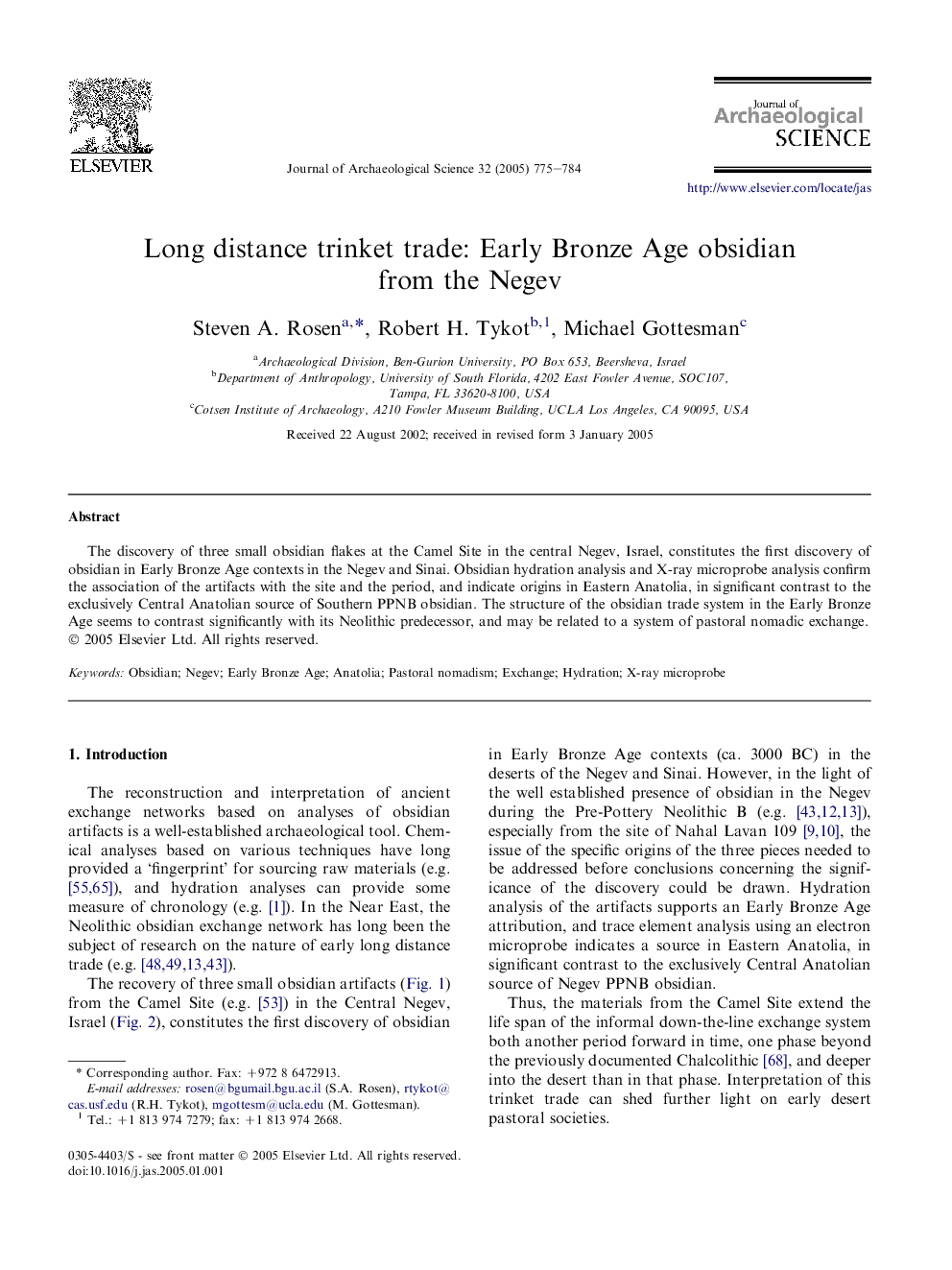| Article ID | Journal | Published Year | Pages | File Type |
|---|---|---|---|---|
| 10499478 | Journal of Archaeological Science | 2005 | 10 Pages |
Abstract
The discovery of three small obsidian flakes at the Camel Site in the central Negev, Israel, constitutes the first discovery of obsidian in Early Bronze Age contexts in the Negev and Sinai. Obsidian hydration analysis and X-ray microprobe analysis confirm the association of the artifacts with the site and the period, and indicate origins in Eastern Anatolia, in significant contrast to the exclusively Central Anatolian source of Southern PPNB obsidian. The structure of the obsidian trade system in the Early Bronze Age seems to contrast significantly with its Neolithic predecessor, and may be related to a system of pastoral nomadic exchange.
Related Topics
Physical Sciences and Engineering
Materials Science
Materials Science (General)
Authors
Steven A. Rosen, Robert H. Tykot, Michael Gottesman,
